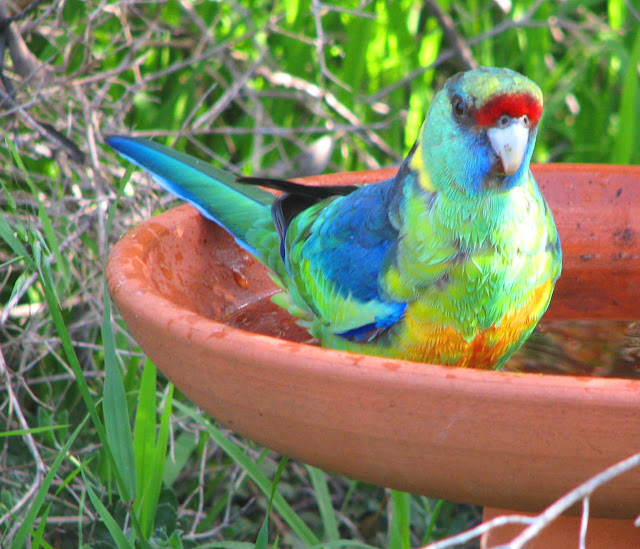 | ||
| White-browed Woodswallow (L) and Australian Magpie-lark (R) |
In the week before Christmas we had a sudden heat wave here in South Australia. Over four consecutive days much of the state had temperatures over 40C (104F). On the worst day Port Augusta's temperature reached a sizzling 47.2C (117F).
That's hot.
Really hot.
This heat wave was unprecedented because we usually get consecutive days of severe heat in January and February, rarely in December.
On the last day of this heat wave I sat at our sun room table taking note - and photos - of the constant parade of birds coming to our bird bath. Most of them looked very stressed by the fiery north wind. Many came for a drink; a few for a bath. Most lingered for many minutes enabling a few good photos.
Australians in particular should be aware of the plight of birds on days of extreme heat. Put out a few bowls of water in shady spots so the birds can have a drink. Place the bowls near to a bush or tree so that they have a safe route of escape from predators.
 |
| Spiny-cheeked Honeyeater feeling the heat |















































